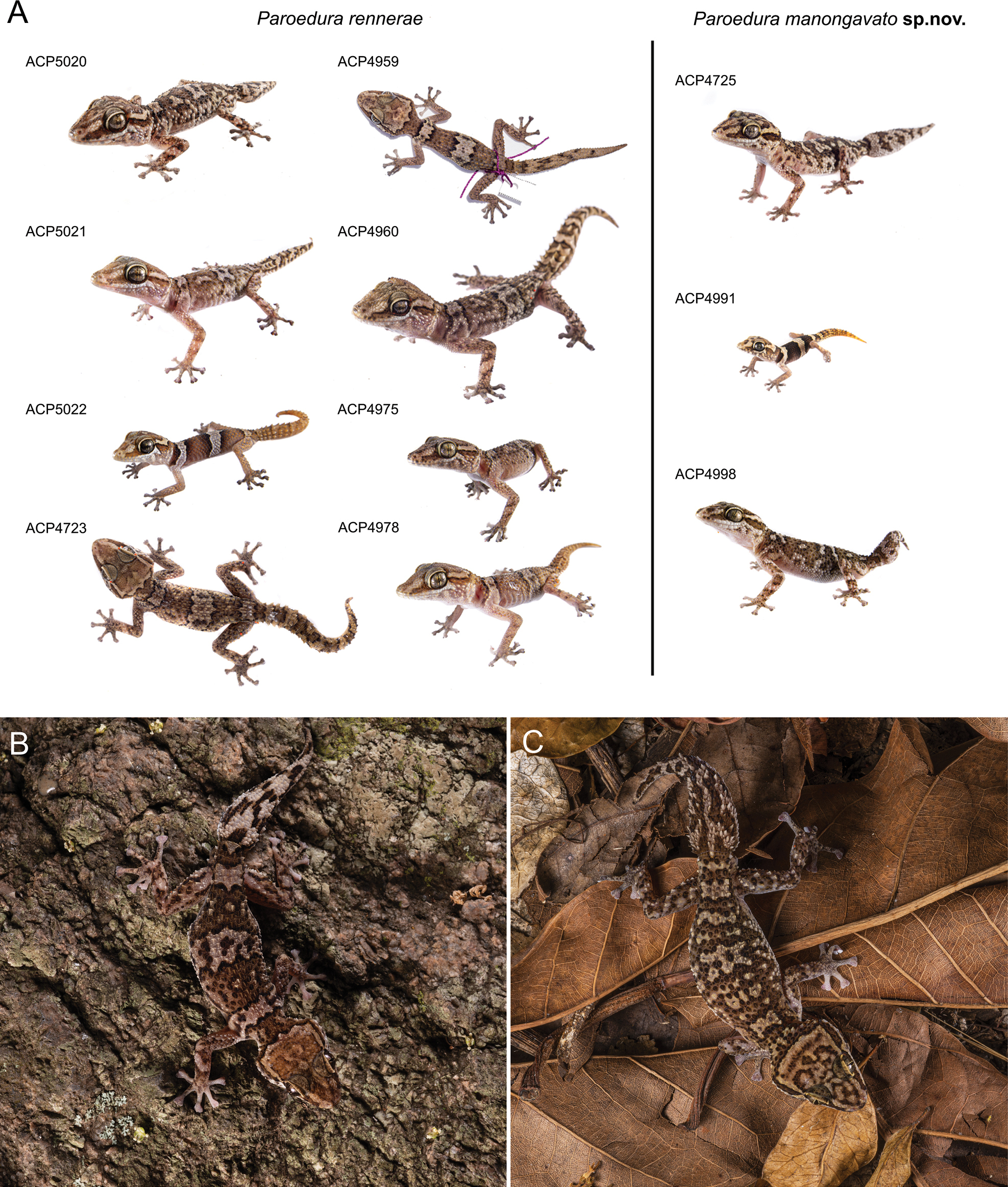
|
||
|
Dorsal or dorsolateral views, and colourations in life of juveniles and adults of Paroedura rennerae and P. manongavato sp. nov. A dorsal or dorsolateral view of P. rennerae from Ambatomainty (male, ACP5020; female, ACP5021; juvenile, ACP5022), from Anja (female, ACP4723), from Sakaviro (juvenile, ACP4959; female, ACP4960) and from Tsaranoro (ACP4975, ACP4978, both undetermined); dorsolateral view of P. manongavato sp. nov. from Anja (undetermined, ACP4725; juvenile, ACP4991) and from Tsaranoro (female, ACP4998) B dorsal colouration of P. rennerae (male, ACP4722) from Anja Reserve C dorsal colouration of P. manongavato sp. nov. (male, ACP5940) from Anja Reserve. Note the overall less spiky aspect of P. manongavato sp. nov. and the less contrasted ochre markings on dorsum, representing the two diagnostic characters that more likely help to discriminate between these two species when occurring in sympatry. Photographs by JLR. |